regnaD kciN
regnaD kciN's Journal2015: A Look Back
Time for my (almost) annual photo retrospective. For those of you who haven't seen one of these before, I always have two rules in building this collection:
1) One photo per month.
2) None of which has been shown on DU before.
Normally, at this point, I gripe about how difficult it's been to choose this year, because I tend to post every good image I shoot here. For once, that isn't true -- I barely posted anything this year. The reason for that was that this was a most unusual year for nature photography in the Northwest. Remember the old Chinese curse, "may you live in interesting times?" 2015 was the most interesting year yet.
As I noted in my last post, the weather up here this past year was decidedly weird, with January temperatures reaching into the 60s and 70s, with very little rainfall. This essentially "kick-started" the seasons, so everything was running well ahead of its usual schedule. There's a certain routine to Northwest nature photography, as detailed in this article I wrote several years ago. In particular, from the first daffodils in March to the last autumn leaves in November, you generally have a number of predictably-good subjects and locations for every month of the year. Not so in 2015! One example will suffice: normally, you can count on Mount Rainier's wildflowers reaching their height of color in middle-to-late August. This year, as hard as it was to believe, they had reached peak before Independence Day! The weather had a ripple effect throughout the year; the overcast days and high water levels ideal for photographing waterfalls and forest streams in May and June barely happened at all, with hot, cloudless days taking their place; middle-to-late summer featured dried-out landscapes (and smoke from massive wildfires); autumn, following that dry summer, was similarly disappointing. Finally, as if to catch up on all it had missed, December was one of the wettest months on record, with downpours, flooding, and dark gray skies making nature photography near-impossible.
Oh, well, as a prominent former Secretary of Defense may have put it, you shoot the year in nature you have, not the one you want...
What may be my favorite image of the year came from early on, in January. Some interesting, distant locale? Hardly -- this was taken from a highway overpass one morning, while returning from dropping my son off for classes at college, when the rising sun broke through the fog behind a grove of bare trees.
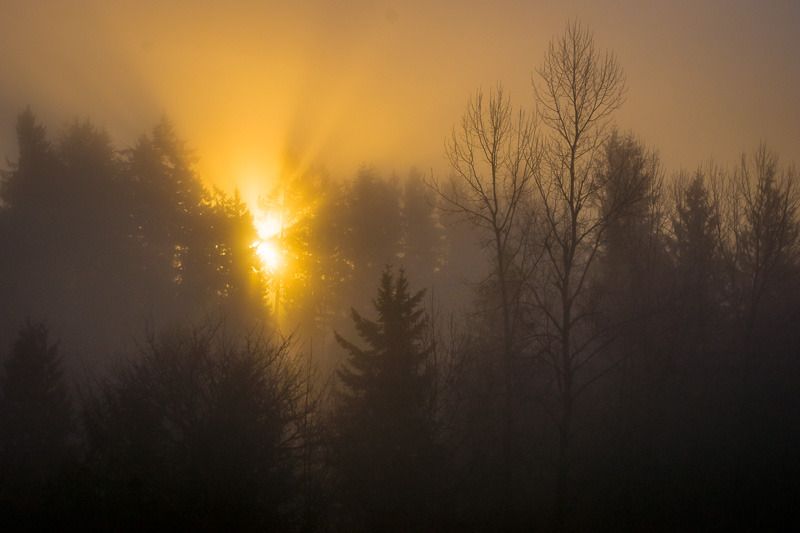
February was literally for the birds. (In past years, I have found it almost impossible to get a shot like this -- during the late winter Cedar River salmon run -- with anything other than a white, blown-out sky. The fact that we actually had clear weather was immensely-helpful in getting this imnage; unfortunately, it was also a harbinger of what was to come.)
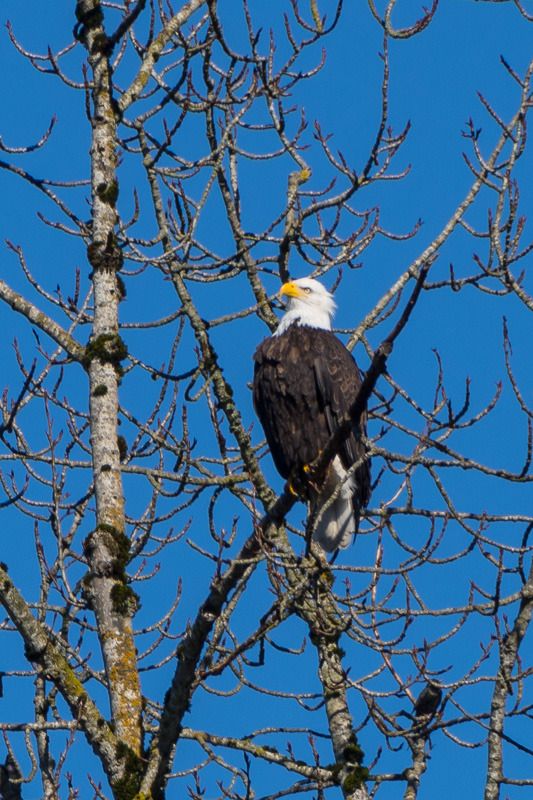
From all accounts, the first sighting of a "flying saucer" came from an Air Force pilot flying near Mount Rainier. With lenticular clouds such as those found on this day in March, is that any surprise?
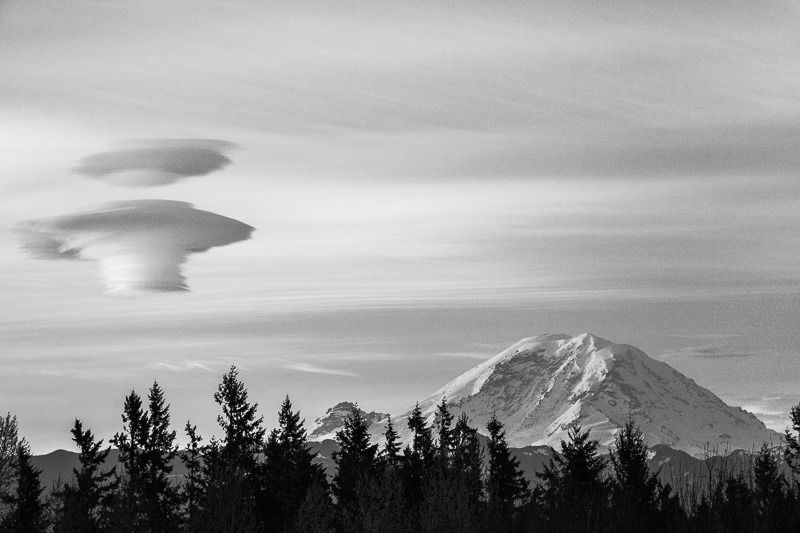
The Skagit Tulip Festival always touts itself as taking place in April, with "bloom dates by Mother Nature." Indeed; I can remember years when the month drew to a close with only the first patches of color emerging in the fields. By contrast, this image was taken on April 8th, at one of the last unharvested fields.
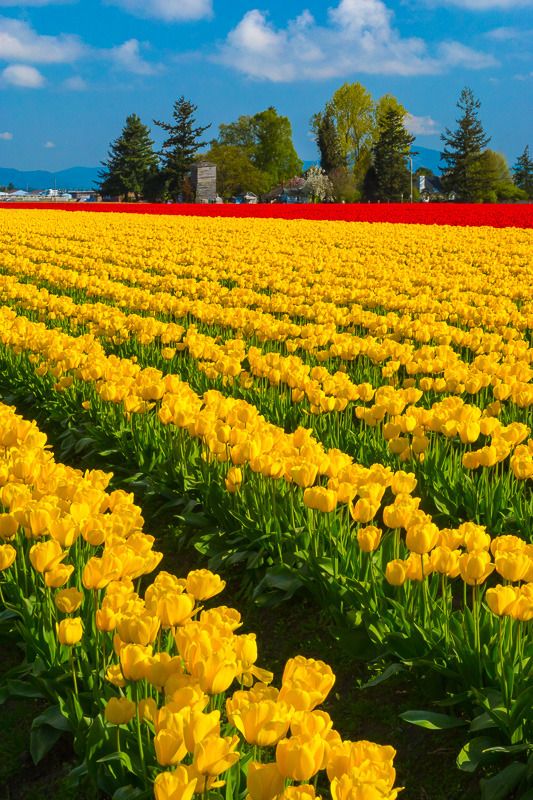
As covered in a previous post, May provided one appropriately-cloudy day to make the uphill trek to Fairy Falls in Oregon. Here's a different composition from that location.
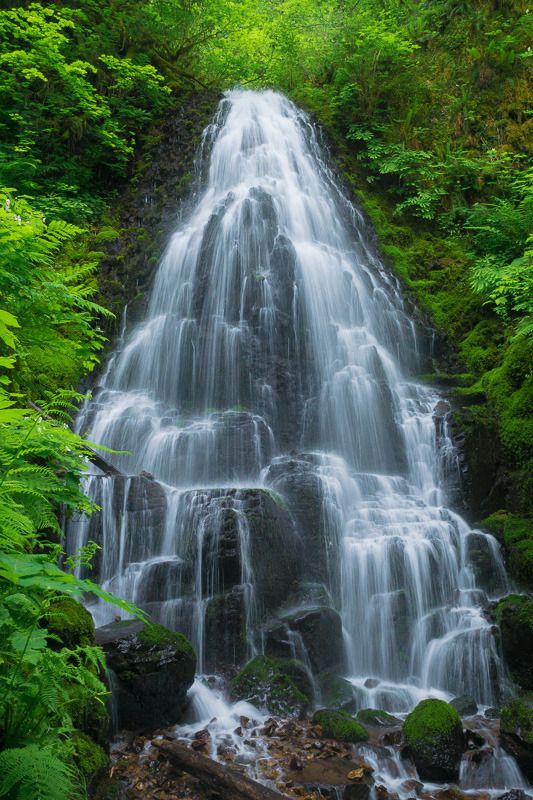
With most of the usual June attractions dried out, I traveled to the coast for my first visit to Ruby Beach in several years.
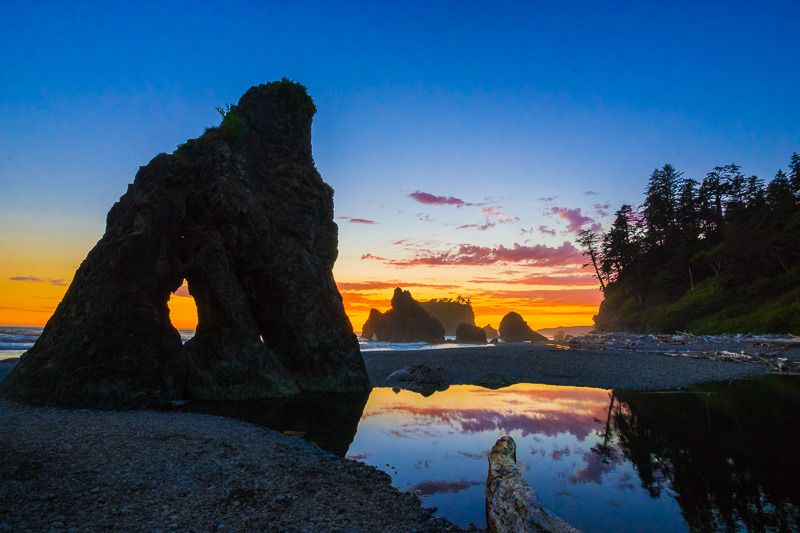
On July 3rd, spurred by reports of an unbelievably-early wildflower bloom, I made it to Lower Tipsoo Lake for my only chance this year to capture Rainier wildflowers.
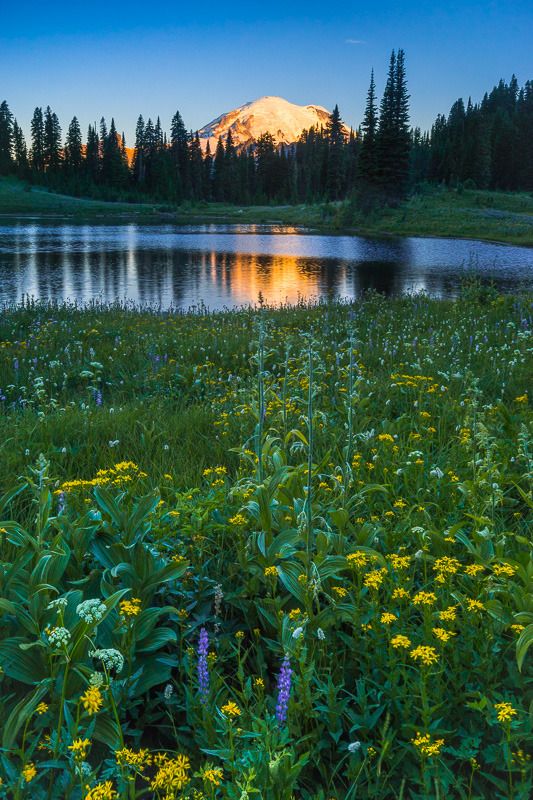
As noted, August was a particularly-unpromising month for photography. With little in the way of natural locales available, I wound up capturing the sunset at Mukilteo Lighthouse (you'll notice more sunset shots than usual this year -- when all else fails, the sky is something you can count on).

I tried visiting Upper Tipsoo Lake twice in September, when the forecast for sunset clouds looked promising. Unfortunately, the first time, smoke from the eastern Washington wildfires flowing over Chinook Pass was so thick, you could barely see Mount Rainier, as I posted here earlier. A week later, the smoke had cleared, and I got the sunset for which I'd been hoping.
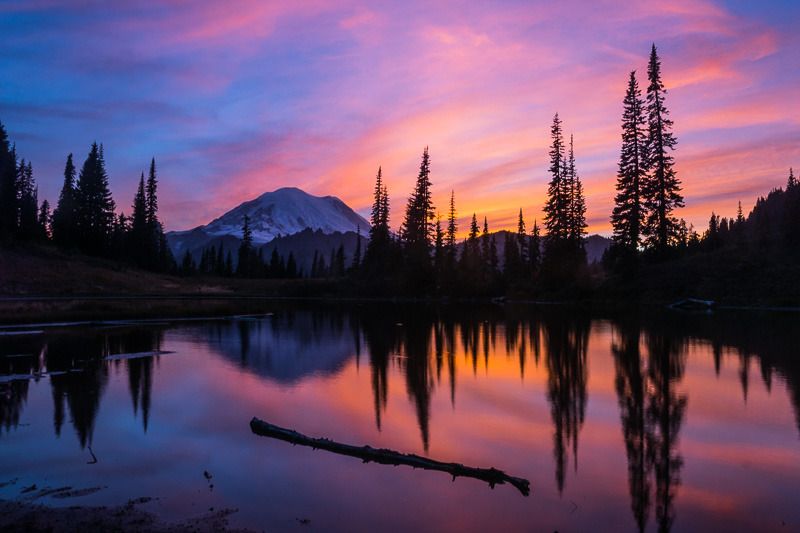
The last two times I had visited Kuboda Garden in south Seattle, I had been 1) attacked by a pitbull and 2) had my car broken into. As you can guess, I hadn't been eager to return! However, as October drew to its end, reports were spreading through the Seattle photographer community that it was the one place where you could find good autumn color. Accordingly, I joined the throng, and wound up unbitten and unrobbed this time.
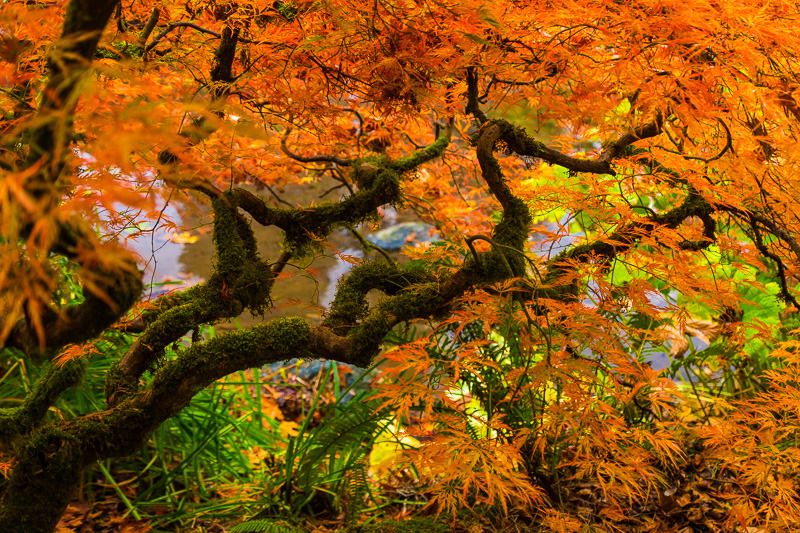
November took me for a second trip to the Gorge, where I found this scene along Starvation Creek.
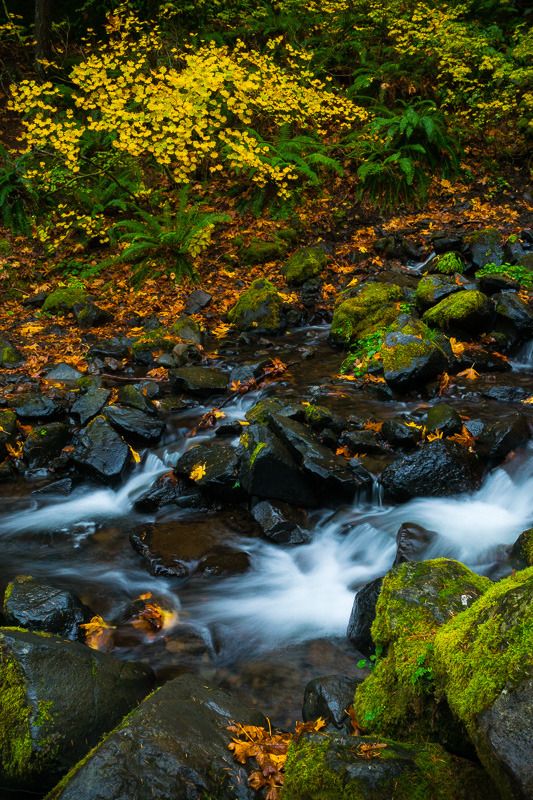
December has been a washout (literally), except for the predictable subject of holiday lighting displays. In keeping with the main pop-culture story of this month, I'll close with an image I've titled "This Is Not The Santa You're Looking For." Here's to a better 2016!
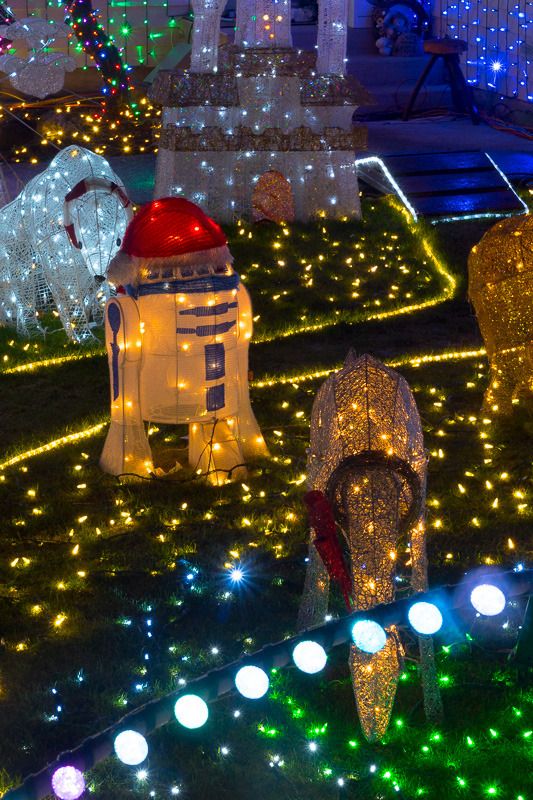
Water Falling Over Things 2015: Part One (And Only)
For those who may have been wondering what happened to my annual (mostly-)Pacific Northwest waterfall series, here's the explanation in one sentence: This has been a godawful year in the PNW for shooting waterfalls (or pretty much anything else, but more on that later).
Put the blame on last year's truly weird winter, where 60- and 70-degree days were not uncommon, and precipitation was way below normal. That meant two things: first of all, there was a lot less water in rivers and streams; second (and I'll write more about this in my year-end summary, due in the next week), seasons seemed to be running at least a month ahead of usual. In other words, not only were waterfalls flowing at a lower level than normal, but the usual spring period when they're at their highest featured warm, clear, sunny summer-like days that are about the worst possible conditions for shooting waterfalls. It wasn't until late in autumn, when the clouds and rain returned, that conditions for decent (I said "decent," not "great"![]() waterfall photography reappeared.
waterfall photography reappeared.
But, of course, that doesn't mean that there were no opportunities at all! Unfortunately, for most of spring, it did rather feel like it. Fortunately, we did have one appropriately-cloudy weekend when I was able to get down to the Columbia Gorge, and take the trail up (and up, and up, and up...) along Wahkeena Creek to one absolute gem I had never visited before, Fairy Falls.
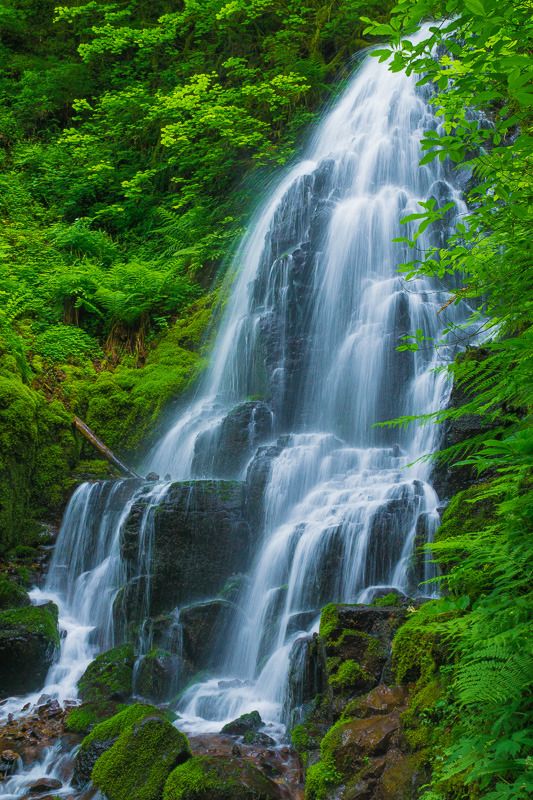
However, that was pretty much the highlight for the entire spring (and summer). Unfortunately, late summer also brought massive wildfires that blackened tens of thousand of acres in Washington state, including the sites of a number of notable waterfalls in the north Cascades, some of which had been on my "must-visit" list for some time. We'll have to wait until next spring's snowmelt to find out whether any of them sustained long-term damage.
Only as mid-October approached did conditions improve, and I was able to capture this autumn scene at nearby Snoqualmie Falls (of "Twin Peaks" fame).
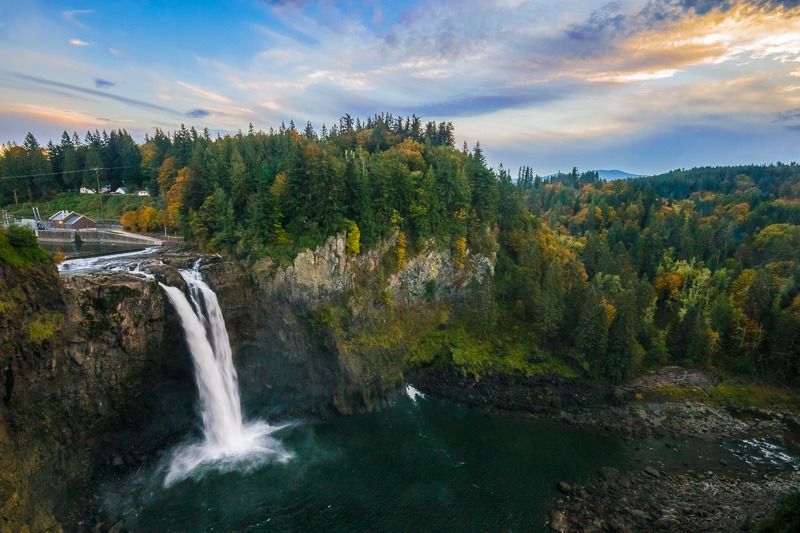
Finally, in November, things were looking up enough that I ventured out on another trip down to the Gorge on what turned out to be a day of steady, drenching rain. (By the time I got back to Seattle, three-plus hours later, my supposedly-waterproof parka was still feeling like it had come straight out of the washing machine.) This time, I avoided the standard tourist stops (which were overflowing with crowds) and headed east. First up was Emerald Falls, another fall I'd never visited before.
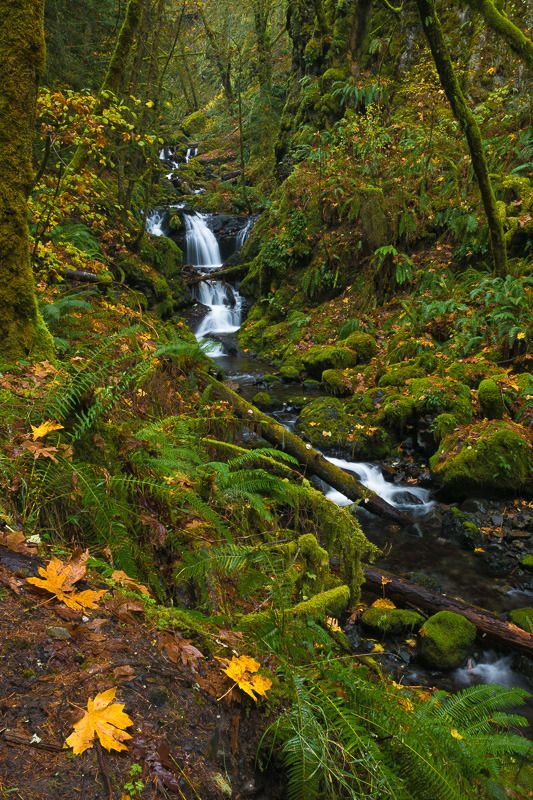
Then further east to Starvation Creek State Park, where the namesake Starvation Creek Falls was the first attraction.
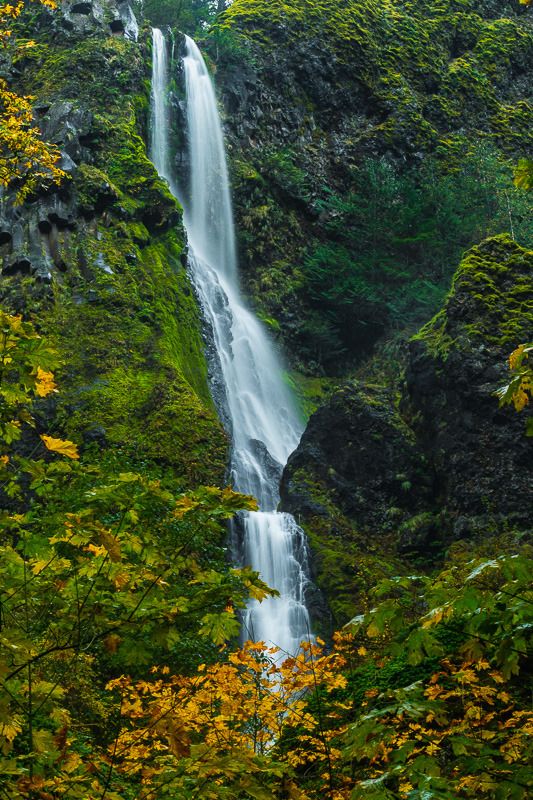
From the park, I cut back west on a trail running parallel to the highway. Ephemeral Cabin Creek Falls is actually screened from the trail by a giant boulder (visible on the right edge of the image), but can be accessed by going off-trail a few yards.

Finally, Hole-in-the-Wall Falls is a striking location I'd visited before, but only in spring. As it turns out, autumn foliage adds a lot to the scene.
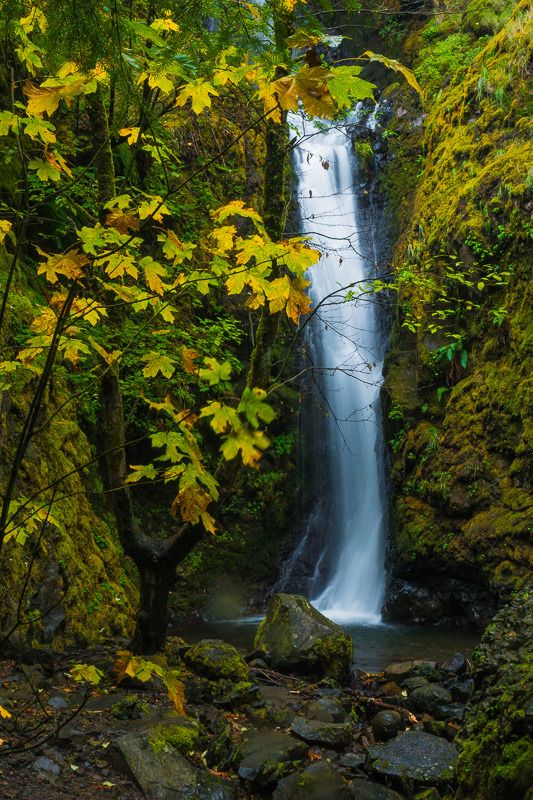
And that was it for this year. Hopefully, 2016 will be better -- certainly, the amount of rain and mountain snow we've already received gives a reason for optimism in that regard.
Profile Information
Gender: MaleHometown: Maple Valley, Washington
Member since: 2001
Number of posts: 26,044